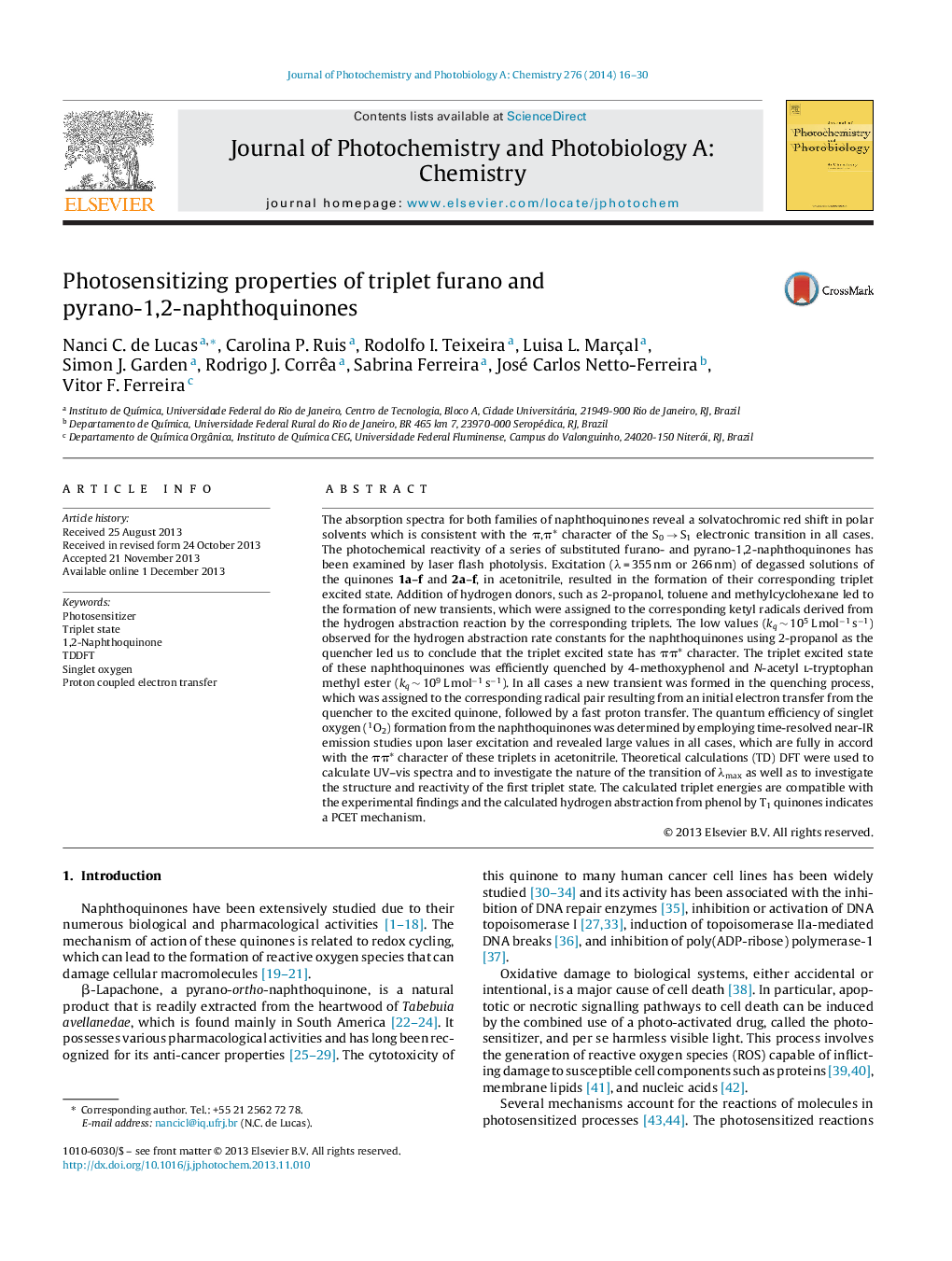| Article ID | Journal | Published Year | Pages | File Type |
|---|---|---|---|---|
| 26688 | Journal of Photochemistry and Photobiology A: Chemistry | 2014 | 15 Pages |
•The triplet excited state of a series of 1,2-naphthoquinones was studied by LFP.•Efficient singlet oxygen formation was measured for the 1,2-naphthoquinones.•The triplet excited state was efficiently quenched by hydrogen donors.•DFT was used to investigate the nature of the electronic transitions (UV–vis).•DFT calculations support a PCET mechanism for hydrogen abstraction.
The absorption spectra for both families of naphthoquinones reveal a solvatochromic red shift in polar solvents which is consistent with the π,π* character of the S0 → S1 electronic transition in all cases. The photochemical reactivity of a series of substituted furano- and pyrano-1,2-naphthoquinones has been examined by laser flash photolysis. Excitation (λ = 355 nm or 266 nm) of degassed solutions of the quinones 1a–f and 2a–f, in acetonitrile, resulted in the formation of their corresponding triplet excited state. Addition of hydrogen donors, such as 2-propanol, toluene and methylcyclohexane led to the formation of new transients, which were assigned to the corresponding ketyl radicals derived from the hydrogen abstraction reaction by the corresponding triplets. The low values (kq ∼ 105 L mol−1 s−1) observed for the hydrogen abstraction rate constants for the naphthoquinones using 2-propanol as the quencher led us to conclude that the triplet excited state has ππ* character. The triplet excited state of these naphthoquinones was efficiently quenched by 4-methoxyphenol and N-acetyl l-tryptophan methyl ester (kq ∼ 109 L mol−1 s−1). In all cases a new transient was formed in the quenching process, which was assigned to the corresponding radical pair resulting from an initial electron transfer from the quencher to the excited quinone, followed by a fast proton transfer. The quantum efficiency of singlet oxygen (1O2) formation from the naphthoquinones was determined by employing time-resolved near-IR emission studies upon laser excitation and revealed large values in all cases, which are fully in accord with the ππ* character of these triplets in acetonitrile. Theoretical calculations (TD) DFT were used to calculate UV–vis spectra and to investigate the nature of the transition of λmax as well as to investigate the structure and reactivity of the first triplet state. The calculated triplet energies are compatible with the experimental findings and the calculated hydrogen abstraction from phenol by T1 quinones indicates a PCET mechanism.
Graphical abstractPhotoexcitation of furano- and pyrano-1,2-naphthoquinones generates a reactive triplet state that acts both as a type I and type II photosensitizer. Theoretical calculations (TD) DFT were used to investigate the nature of the electronic transitions and the mechanism of hydrogen abstraction.Figure optionsDownload full-size imageDownload as PowerPoint slide
